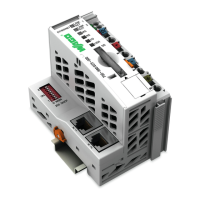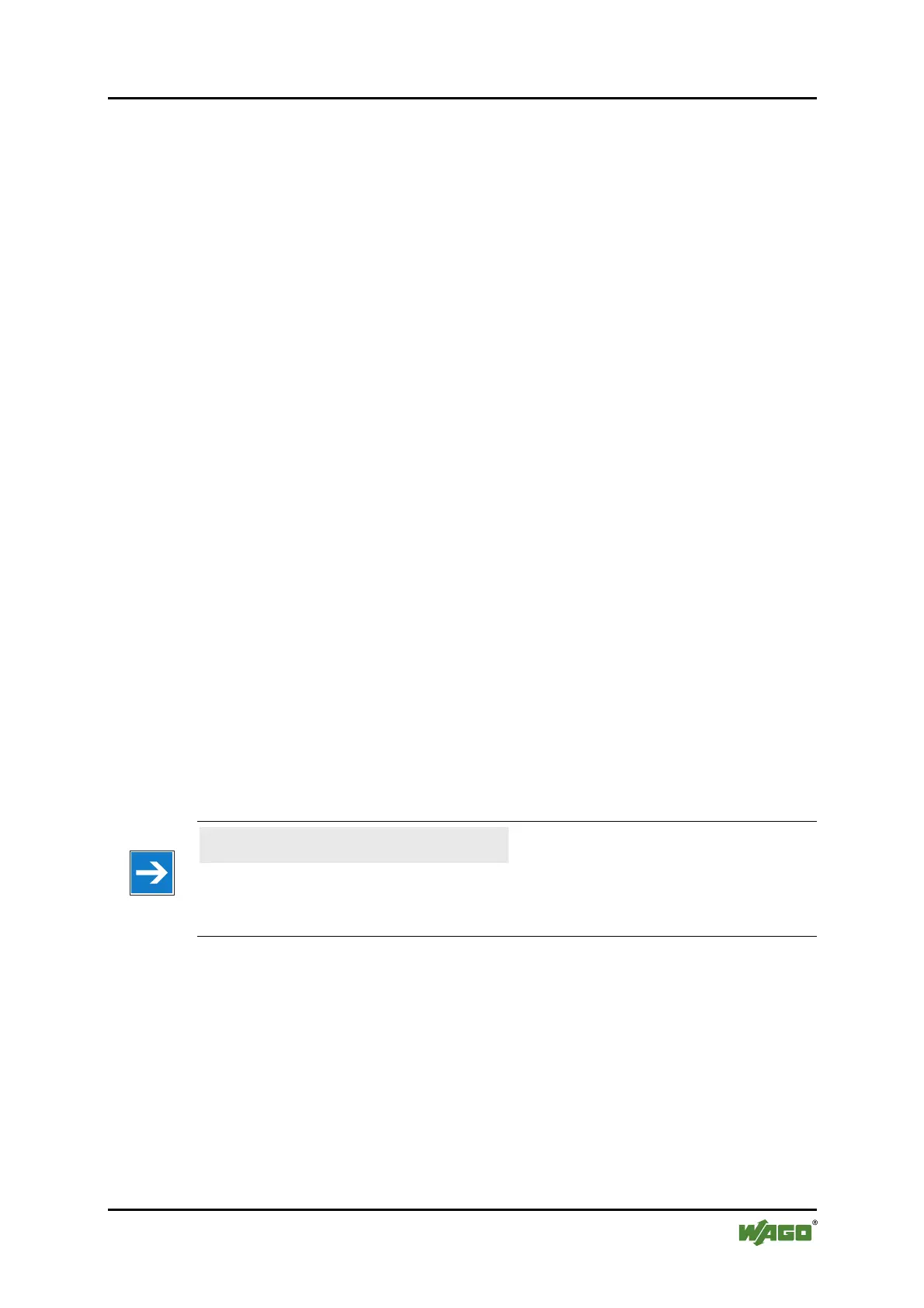WAGO-I/O-SYSTEM 750 Fieldbus Communication 211
750-880, 750-880/025-000 ETHERNET Programmable Fieldbus Controller
Manual
Version 1.0.1
12.1.2.2 DHCP (Dynamic Host Configuration Protocol)
The fieldbus coupler/controller internal HTML page opened via the "Port" link
provides the option to configure the network using the data saved in the EEPROM
or via DHCP instead of via the BootP protocol.
DHCP (Dynamic Host Configuration Protocol) is a further development of BootP
and is backwards compatible with BootP.
Both BOOTP and DHCP assign an IP address to the fieldbus node (Client) when
starting; the sequence is the same as for BootP.
For configuration of the network parameters via DHCP, the fieldbus
coupler/controller sends a client request to the DHCP server e.g., on the connected
PC.
A broadcast request is transmitted to Port 67 (DHCP server) via the protocol that
contains the hardware address (MAC ID) for the fieldbus coupler/controller.
The DHCP server then receives this message. The server contains a database in
which the MAC ID and IP addresses are assigned to one another. When a MAC
address is found a broadcast reply is transmitted via the network.
The fieldbus coupler/controller "listens" at the specified Port 68 for a response
from the DHCP server. Incoming packets contain information such as the IP
address and the MAC address for the fieldbus coupler/controller. A fieldbus
coupler/controller recognizes by the MAC address that the message is intended
for that particular fieldbus coupler/controller and accepts the transmitted IP
address into its network.
If there is no reply, the inquiry is sent again after 4 seconds, 8 seconds and 16
seconds.
If all inquiries receive no reply, a blink code is reported via the I/O LED. The
parameters cannot be applied from the EEPROM.
Note
DHCP configuration is not saved in the EEPROM!
Please note that the network configuration is not stored in the EEPROM when
using DHCP in contrast to configuration via BootP.
The difference between BOOTP and DHCP is that both use different assignment
methods and that configuration with DHCP is time limited. The DHCP client
always has to update the configuration after the time has elapsed. Normally, the
same parameters are continuously confirmed by the server.
The difference between BOOTP and DHCP is that both use different assignment
methods. BOOTP can be used to assign a fixed IP address for each client where
the addresses and their reservation are permanently saved in the BOOTP server
database.

